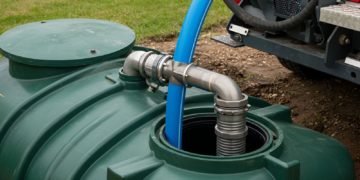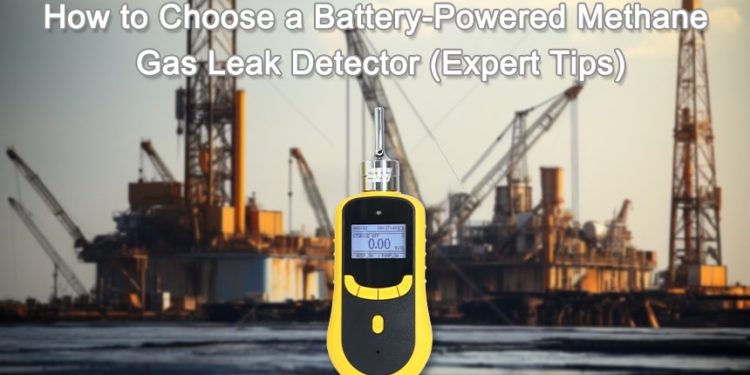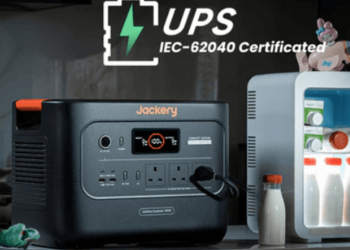Gas detectors have been part of our lives since the dangerous gases have been around our properties, lives, industries, or anywhere else. These dangerous gases can cost lives and they can destroy your whole properties and businesses. You can imagine how harmful they are. One of the most harmful gases is methane.
But, what makes it a more brutal silent killer than other gas is that the manufacturers and energy counselors feel the need to produce a separate battery-powered methane gas leak detector. Its odorless, colorless, and highly flammable nature makes it the biggest threat. That’s why gas detectors have become essential tools in controlling this risk.
In this guide, we are focusing on battery-powered methane gas detectors. So, we are sharing a few expert tips on how to choose the right one for your needs.
- Battery Powered?
The first feature that you need to consider while choosing a battery-powered methane gas leak detector is its battery power. Yes, because there is no point in buying it in the first place if its battery power is useless. Moreover, you need to be well-prepared to swap those batteries out if your alarm runs on replaceable batteries right after a few months or once a year.
This means it is an added expense and another chore on your to-do list. Then, what’s a smarter choice? A battery-operated methane gas leak detector with a built-in battery that lasts at least six years is the only right choice.
In this way, there will be no constant replacements and no extra costs—just reliable protection. You need to look for one with a warranty to ensure long-term peace of mind and safety without the maintenance headache.
- 10% LEL (Lower Explosion Limit):
The Lower Explosion Limit (LEL) measures how flammable an environment is. Remember, the air is gas-free and safe at 0% LEL. At 100% LEL, gas has reached its lowest flammable limit. It means ignition could cause a fire or you can expect an explosive environment. Also, consider that different gases have different LEL percentages.
In the case of methane gas, concentrations below 5% are too low to burn. However, levels of LEL between 5% and 17% are highly flammable. So, you need to consider the LEL percentage while purchasing a methane gas detector. Imagine the gas detector alarms trigger at 10% LEL—well before the air becomes dangerous. It gives the employees and other people more time to escape safely.
So, it’s proven that choosing a detector with the right LEL sensitivity ensures early warning and more time to react. If you don’t pay heed to this point, you can end up having gas detectors that trigger alarms at 20% LEL or higher. It may be too late in some situations. Hence, a better option is a detector that alerts at 10% LEL.
- New Sensing Technology:
MEMS sensor technology is another game-changing feature to check while buying a methane gas detector. The best part is that it uses 600 times less power than other options. Make sure it includes this advanced technology when choosing a battery-powered methane gas detector, especially for models sold in the U.S.
This compact yet powerful sensor is highly effective. It accurately detects natural gas while eliminating false alarms. Moreover, it has improved accuracy and energy efficiency. As a result, it ensures long-lasting performance and reliable protection for your home or property.
- Are Your Devices Listed to UL-Listed 1484 Standard?
Make sure your gas leak detector meets the UL-Listed 1484 Standard. It is an important tip that will help you ensure your safety from methane gas hazards. This certification proves the device has been thoroughly tested for reliability. A UL-listed mark shows that it meets strict safety requirements.
Otherwise, you can’t be 100% sure your detector will work when needed. As you know, gas leaks are dangerous, so don’t take chances. It is a good way of investing in a certified detector that will give you peace of mind. As a result, you will stay protected with a device that meets the highest safety standards.
- Consider the Number of Gas Alarms:
One methane gas alarm isn’t enough to cover your whole property in most of the cases. You need to consider how many gas appliances you have and how far your alarm can detect leaks. Plus, placement is key to keeping your home safe.
Furthermore, the NFPA715 standard suggests installing a gas alarm in every room with a gas appliance. This will ensure maximum protection against leaks. So, you don’t need to rely on just one—install the right number to keep your home and loved ones safe.
- Smart Home Integration:
Many people don’t consider smart home compatibility when they are choosing a battery-powered methane gas leak detector. If your home already has smart devices, make sure your gas alarm can connect to them. Integration will help you to get real-time alerts and enhanced safety features.
Moreover, a connected system ensures you are notified instantly of any gas leaks, even when you are away. That good as smart home integration isn’t just convenient—it adds an extra layer of protection to your home. You can stay safe with a detector that works seamlessly with your setup.
Wrapping Up!
Before wrapping up this guide, we would like to talk about one important benefit of choosing a battery-powered methane gas leak detector – no plug-in required. On the other hand, plug-in and corded gas detectors are outdated options compared to fully battery-powered models. They rely on electricity, which means they may alert you to gas leaks later than a battery-powered unit. Plus, they come with hidden energy costs over time.
This shows a battery-operated detector works independently of outlets. It guarantees continuous protection—even during power outages. Did you know another advantage of it? You can place it near the ceiling, where natural gas tends to rise. This step will make it more effective at detecting leaks early.
If you have tips and tricks that could help anyone while selecting a battery-powered methane gas leak detector, share them in the comments section.











































































